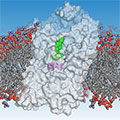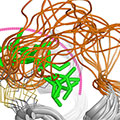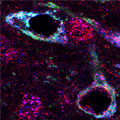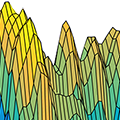Featured Paper of the Month – October 2020
Published in Neuropsychopharmacology by Mereu, Maddalena; Hiranita, Takato; Jordan, Chloe J; Chun, Lauren E; Lopez, Jessica P; Coggiano, Mark A; Quarterman, Juliana C; Bi, Guo-Hua; Keighron, Jacqueline D; Xi, Zheng-Xiong; Newman, Amy Hauck; Katz, Jonathan L; Tanda, Gianluigi
Modafinil and methylphenidate are clinically available medications that inhibit the reuptake of dopamine in neurons, a common mechanism with psychostimulants like cocaine. We investigated the reinforcing actions of modafinil or methylphenidate alone and in combination with cocaine, in rats. While rats did not self-administer modafinil, suggesting low abuse liability, methylphenidate was self-administered similarly to cocaine. However, while both drugs potentiated cocaine’s reinforcing effects, only methylphenidate potentiated the elevated dopamine levels produced by cocaine…










